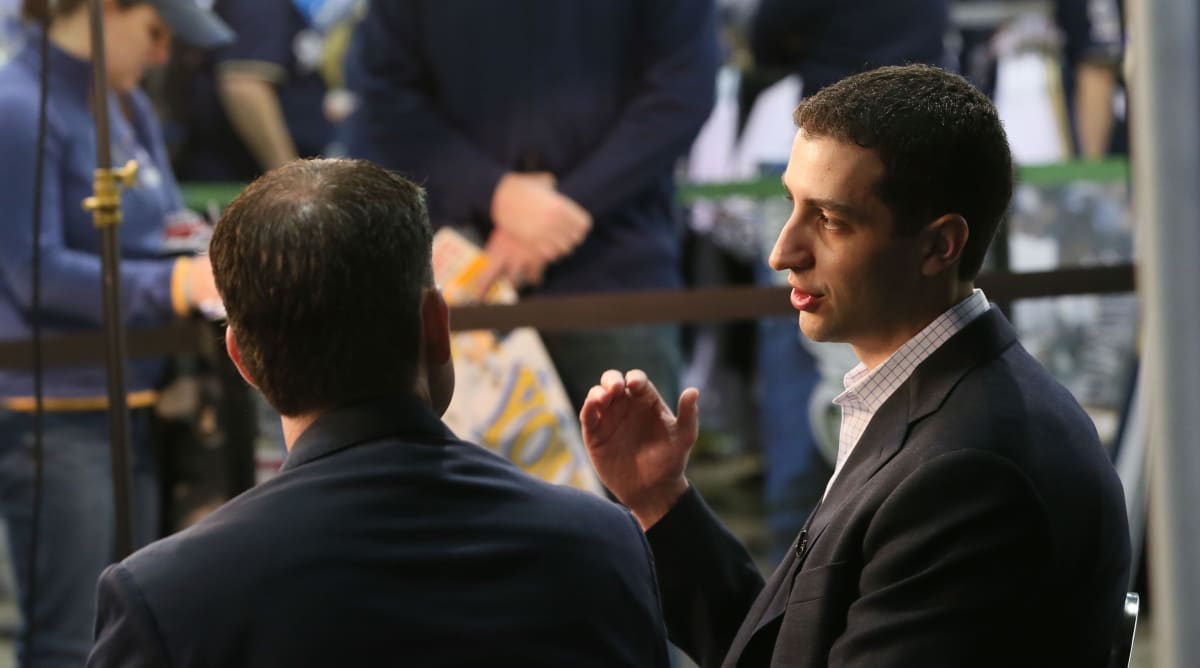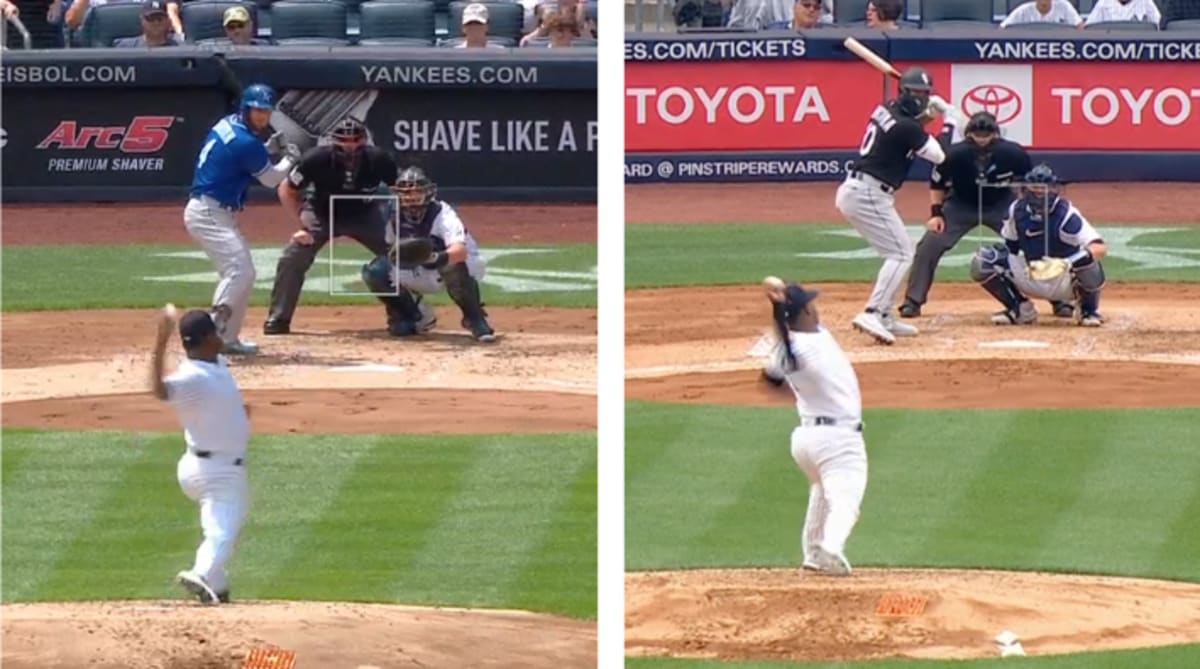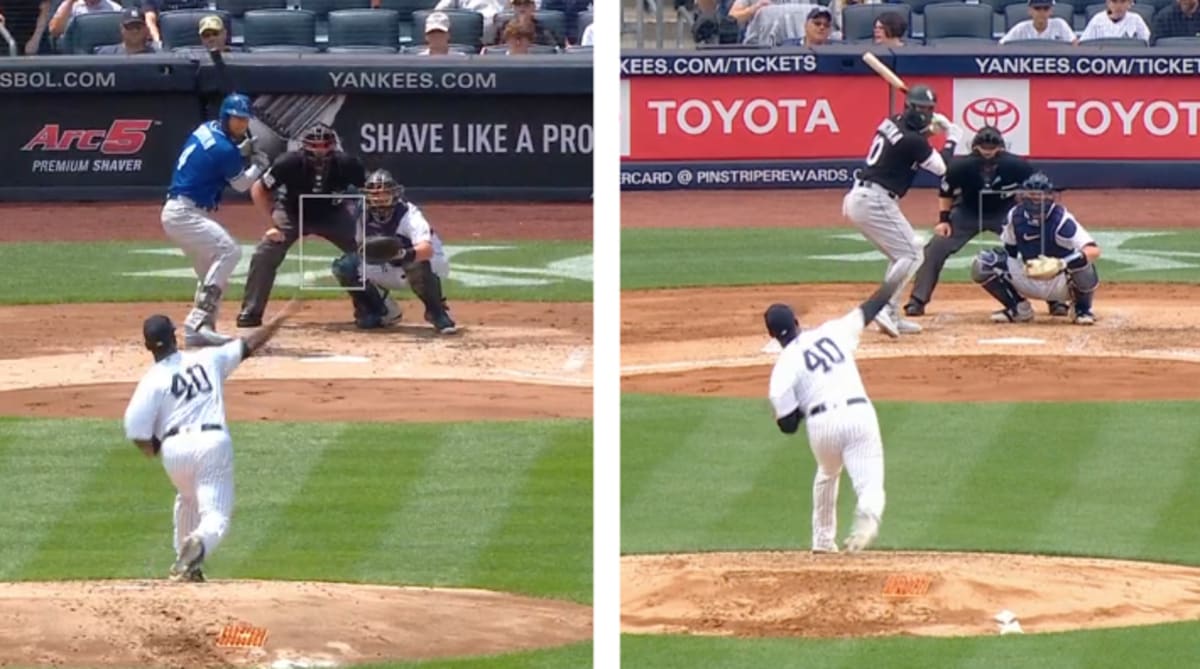The Brewer-fication of the New York Mets this winter continued with the signing of free-agent pitcher Sean Manaea. Despite moving from MLB’s smallest media market to its largest, Mets president David Stearns is deploying the same strategy he used in Milwaukee: emphasize pitching and defense, and take a boatload of short-term fliers on mid-tier veterans.
Stearns has spent $59 million on eight free agents, of whom only Manaea is signed for more than one year (two years, $28 million, though with an opt-out after the first year). The Mets are paying more than that this season for players to not play for them ($68 million). His rotation is experienced but volatile due to injuries and recent performance: Kodai Senga, 31 on Opening Day; José Quintana, 35; Luis Severino, 30; Manaea, 32; and Adrian Houser, 31.
The Mets’ days of wild spending are on pause after two massively disappointing seasons in which they blew a 10.5-game division lead one year and lost 87 games the next. Still left with a 2024 CBT payroll that will top $300 million, Stearns has taken the right approach given that the Mets are not very close to competing with the Braves and Phillies: stay nimble as the club builds a farm system and culture. (The Mets did bid on premier free-agent pitcher Yoshinobu Yamamoto, but he was an outlier because of his talent and age, 25.)
The approach by Stearns resembles that of Andrew Friedman when he brought his Tampa Bay Rays–crafted efficiency to the Los Angeles Dodgers in 2015. Friedman didn’t spend big on a free agent until ’18 (A.J. Pollock) while cutting payroll from his initial season.

Michael Sears/Milwaukee Journal Sentinel-Milwaukee
Along with signing Manaea and trading for Houser (who has followed Stearns from Houston to Milwaukee to New York), Stearns has signed Severino (6.65 ERA) and reliever Jorge Lopez (5.95), who are coming off disasters of a season; center fielder Harrison Bader after two poor, injury-interrupted seasons (77 OPS+); infielder Joey Wendle after two down seasons (68 OPS+); reliever Michael Tonkin, who has been released three times, including once by Stearns in Milwaukee; and reliever Austin Adams, coming off a broken ankle and a 5.17 ERA last season.
Fishing for such bargains every year in Milwaukee, Stearns hit on such free agents as Yasmani Grandal, Mike Moustakas, Eric Thames, Jesús Aguilar, Avisail Garcia, Wade Miley and Jhoulys Chacín and missed on the likes of Neftalí Féliz, Brett Anderson, Justin Smoak and Logan Morrison.
Stearns is signing placeholders to keep the Mets somewhat competitive while ramping up the behind-the-scenes processes. And for him, that means a huge emphasis on pitching and defense. His Brewers teams from 2016 to ’22 never ranked higher than 17th in Opening Day payroll but ranked eighth in wins, seventh in ERA and seventh in strikeouts.
You must break down his Milwaukee tenure using his famous $60 million pitching lab at the Brewers’ spring training complex as the dividing line. The state-of-the-art facility opened in 2019 and was the culmination of the culture and tech-savvy brainpower Stearns put in place over his first three seasons. He regarded the lab as such a propriety advantage that several years ago when the owner of another major league team toured the Maryvale, Ariz., complex to get ideas on a planned renovation of his own training complex, Stearns barred the owner from entering the lab.
With the installation of the lab, the Brewers became the best strikeout staff in baseball:
Brewers’ Strikeout Rate Under Stearns, Before and After Lab
| Year | K/9 | MLB Rank |
|---|---|---|
2016 to ’18 |
8.2 |
14th |
2019 to ’22 |
9.7 |
First |
How did the Brewers become the best strikeout staff in baseball? Like most clubs in recent years, the Brewers gained more swing-and-miss by throwing fewer fastballs. But they took it to an extreme while emphasizing more off-speed pitches rather than more spin, the more common approach.
Brewers’ Pitch Use Under Stearns, Before and After Lab
| Year | Fastballs* | Off-Speed |
|---|---|---|
2016 to ’18 |
60.6% (second) |
10.2% (26th) |
2019 to ’22 |
51.9% (ninth) |
14.6% (seventh) |
To get the same kind of results with the Mets in 2024, Stearns and his crew are going to have to find consistency with Quintana, Manaea and Severino. Quintana needs help with refining his changeup (run value since 2017: minus-1, minus-4, minus-8, plus-1, minus-7, minus-14, zero). Manaea needs the steady spot in the rotation the Giants never afforded him and to build on the success of the sweeper he launched last year. Severino? He needs an overhaul, especially when it comes to mechanics and confidence.
In ’17 and ’18, Severino went 33–14 with a 3.18 ERA over 384.2 innings. Alex Bregman told me back then Severino had the nastiest stuff of any pitcher he had faced. But since then, injuries (Tommy John surgery, lat and oblique strains) and pitch-tipping worries have corroded his stuff and confidence. In five years since those two prime seasons, Severino is 13–12 with a 4.47 ERA in just 209.1 innings.
Turning 30 next month, Severino has age and above-average velocity on his side. But the Mets need to get him into their version of the Milwaukee pitching lab to fix his mechanics.
To see how far he has fallen, look at two fastballs from Severino below: one from his prime (2018, a strikeout of Alex Gordon on the left) and one from last season (’23, a home run by Yoán Moncada on the right). At two key points you can spot the bad habits that crept into his delivery.
Load phase

Those are near-perfect mechanics on the left. Front shoulder stays on target. Direct stride path. Less than 90-degree angle created by arm at top of the load phase and at foot strike. Strong front side with lead arm and glove “pulling” toward body. Great separation between rotation of the hips and torso.
Look how far he strayed from those mechanics in 2023. Front shoulder opens. Stride path is indirect (toward the first-base side of the mound). Arm angle is 90 degrees at best. Weak front side with lead arm and glove already pulling away. Less separation of rotation of hips and torso.
See how he has lost his proper posture. He is arching his back, creating a bigger scap load.
Release point

The fastball on the left is thrown with his “natural” release point—part of an athletic, well-timed delivery. It is classified as low-three-quarters.
On the fastball on the right from last year, you can see how the problems with his load phase create problems at release. That arched back and off-set stride have created an open position and tilted torso at release. He also has not made efficient use of his lower half. The inefficiency of his lower half and the torso tilt lead to a high-three-quarters delivery.
Severino still throws plenty hard enough to be successful, but there is less life and worse location in his heater because of the mechanical problems. The differences in his fastball are obvious:
Severino Four-Seam Fastball
| Year | Pct. | MPH | RPM | Rel. Hght | SLG |
|---|---|---|---|---|---|
2018 |
50% |
97.6 |
2,365 |
5.97 |
.451 |
2023 |
45% |
96.5 |
2,266 |
6.15 |
.688 |
There were 152 pitchers last season who threw at least 500 four-seam fastballs. Severino allowed the highest slugging on that pitch except for Chris Flexen (.740), who has below-average velocity (91.9).
How unusual is it for a pitcher who throws 96 mph to allow a .688 slug on his four-seamer? This rare: It had never happened in the pitch-tracking era. Since 2008, there have been 331 pitcher seasons with an average velocity of at least 96 mph (min. 500 fastballs). Severino’s .688 slug is the worst in that 16-year group:
Highest SLG on Four-Seamer, 96+ MPH Average, 2008 to ’23
| Year | SLG | |
|---|---|---|
Luis Severino |
2023 |
.688 |
Carlos Martinez |
2015 |
.641 |
Dylan Cease |
2019 |
.637 |
Ken Giles |
2016 |
.627 |
José Ruiz |
2022 |
.617 |
Martinez and Cease were 23-year-old starters still figuring out command issues. Giles and Ruiz were relievers.
In his first move as GM of the Brewers in 2015, Stearns picked up righthander Junior Guerra off waivers from the White Sox, the third team that cut him. Guerra, a converted catcher, was entering his age-31 season and had pitched in only three major league games after spending years pitching in Spain, Italy, Mexico and Venezuela. He went 9–3 with a 2.81 ERA in 20 starts for the ’16 Brewers.
Ever since, Stearns has established an impressive track record of finding bargains. But don’t worry, Mets fans. The Brewer-fication of the Mets is not a long-term strategy. The Mets have no dead money on the books in 2025. They should jump right back into the deep end of the ’24–25 free-agent pool, which could include Juan Soto, Pete Alonso, Alex Bregman, Corbin Burnes, Zack Wheeler, Max Fried and Walker Buehler.







